The Cornell Lab Bird Academy › Discussion Groups › Joy of Birdwatching › Activities: Local Bird Exploration
-
Just getting started with this group. Been watching birds at my feeders here in Athens, GA for a couple of years. Just a few minutes ago heard a barred owl call, during the day. This is unusual, I usually here him about 4 in the morning. Just recently was able to use Merlin to ID the Clay colored sparrows at my feeder. I hadn't seen them before. Hoping to connect with the local Audubon society and maybe do some field trips soon.
-
This lesson inspired me to like a few bird-focused pages on Facebook and check out a few upcoming festivals as well. I knew that birding was a "thing," but I didn't realize how big the community is!
-
-
 Just spent 15 minutes watching the birdcam at Cornell. I saw a woodpecker, blue jay, cardinal, crow, and this bird in the picture. Can anyone help me identify it?
Just spent 15 minutes watching the birdcam at Cornell. I saw a woodpecker, blue jay, cardinal, crow, and this bird in the picture. Can anyone help me identify it? -
ElizabethBird AcademyI'm glad you checked out the Cornell feeder cam! That is a tufted titmouse.
-
-
Much to my surprise, there are so many different varieties of sparrows in my neighbourhood. Some are common, some infrequent and some quite rare. Here are 3 examples. I will review their songs and compare them to determine different species. The tree sparrows are common , the chipping sparrow is common but the white crowned sparrow is apparently rare. Using Merlin, I will review their range, their song and the differentiating characteristics of these small sweeet birds



-
Activity 1: I did my 15 minutes watching birds at my feeder a little after 2PM today. Clouded over with light snow. I witnessed 6 species: the five I am sure about was 2 Tufted Titmouse, 2 Red-bellied Woodpeckers, one Downy Woodpecker, 8 Dark-eyed Juncos, and a male North Cardinal. THere was also a sparrow, that I believe was a Tree Sparrow. Sparrow size, burnt orange head patch. Looking at Merlin, this bird looked closest to a Tree Sparrow. Activity 2: Merlin lists the most common to see as Black-capped chickadee, Blue Jay, Tufted Titmouse, Northern Cardinal, Dark-eyed Junco, Mourning dove, and White-breasted nuthatch. I saw three of these species today and have seen all of these species here at my birdfeeder. Activity 3: Five species that pass through here include: Pine Siskin, Red Crossbill, Hoary redpoll, Horned Lark, and Lapland Longspur. Another less common visitor is the Snow Bunting, which I saw today in a group of 25. Interestingly, they listed the Great Blue Heron as rare. Given the fact that I see multiple Great Blues on my way to and from work everyday when the water bodies are NOT frozen over, I find this hard to believe. There are at least three rookeries that I know of within 10-12 miles of here and probably more that I don't know about.
-
I have found a spot near my house where I see a lot of birds, so I walked down there. It was probably a bit late - there weren't all that many birds. Did manage to see a house sparrow, though (so, at least I know the binoculars work...). I finally got the bird pack downloaded, so I've been able to listen to it's calls, and they match, too! (I heard it before I saw it)
-
I am excited to use many of the Merlin tools-I have been using the Audubon app since May and I like it and have my bird lists there, but some of the frequency charts in Merlin are so cool! I wish there was a way to share data between Merlin and Audubon so my ids could appear in both places. Anyone know if this is possible ?
-
I watched a webcam located in Ontario, Canada and saw what I think is a Canada Jay, based on likely birds in Merlin. It is Robin-sized, I think, and is shaped like a Northern Cardinal or Blue Jay without the crest. It has a long tail, is gray with white on its face and neck. The nape of the neck is darker, almost black, compared to the rest of the body. Merlin says these birds often are in small family groups, although I did not see other such birds. They are often found in campgrounds. According to “All About Birds,” these birds use sticky saliva to help store foods above the snow line and this might explain why they are able to live so far north.
-
I kept seeing an interesting bird while kayaking in the early autumn this year. When I looked it up in the bird book, it seemed to be an American Bittern, but I had never heard of them being in our area (actually, I knew very little about them in general). I just went onto eBird and discovered several sightings of American Bitterns over the past five years, all around the Hudson River within several miles of where I had been seeing one. Now I'm pretty sure that I was correct in my identification.
-
LOTS of BCC, nuthatch and titmouse activity. Swarming the feeders. Fun to watch.
-
I watch my bird feeder every day, and I get excited whenever I see a new bird and make an ID. Today I saw a flock of little gray fluff balls swarming on my suet feeder, in constant motion. I looked them up in Merlin and it was easy to find out they were Bushtits. So cute! I’m going on a high elevation hike this weekend and I used ebird’s explore hotspots to see what’s been spotted there recently, so I’ll know what new birds to look for. A Clark’s Nutcracker and a Northern Flicker were spotted there two months ago.


-
Activity 1: I just decided to spend 15 minutes watching birds through my window. I saw:
- A flock of 13 dark-eyed juncos (the oregon variety). Very common here.
- Mountain Bluebird
- Northern Saw-whet Owl
- American Kestrel
- Common Goldeneye
- Gadwall
-
1. I watched the feeder cam for the first time ever today this am as I knew I had to work later and wouldn't be able to go out, I saw many Blue Jays, gold finches, a couple downy woodpeckers, possible a hairy as the beak size looked to be a third the size of its head, a red-bellied woodpecker, many black-capped chickadees, a male and female cardinal, and for my first time ever 5 tufted titmouse, I live in Oregon so have never seen one of those and used Merlin to ID it. Does it count as a life lister if I saw it on a bird cam from my living room 3000 miles away? Haha not sure. 2. The likely birds are pretty much the birds that I have been seeing on a regular basis while birding around Portland. 3. I am having difficulty finding birds that I didn't know would be there in November as I usually look before I go using the apps, but I did discover in two areas that I have been birding all summer that the reason I am now seen golden and ruby crowned kinglets is because they aren't there in the summer and they start showing up in October haha so now I know why haha so yea learning:)
-
My husband and I walk in the mornings and take some pictures. Thanks to eBird and the local Bird Watchers Group we were able to identify this Gray Hawk-Juvenile Buteo plagiatus, San José, Costa Rica 7 November 2020.

-
Beautiful! Lucky sighting!
-
-
Preparing my backyard for the Project Feeder Watch this past week. We have repositioned the feeders and added some pine branches to protect the feeders and are using an old Flexible Flyer Sled to add a ground feeding zone. Also ,used the interactive Cornell Winter Feeding Web site and Bird Notes to redesign our feeding area for location, feeder type, and feed options. With our first Seasonal Snow and the above changes in place we have observed an abundance of Pine Siskins, Gold Finches, House Finches, along with our Northern Cardinals, Blue Jays, Red breasted Nuthatches, White Breasted NutHatches, House Sparrows , Black -Capped Chickadees, Downy Woodpeckers, Red bellied Woodpecker, Red Winged Blackbirds, Mourning Doves, and our Winter Season favorite , the Dark Eyed Juncos !! Of course, with all this activity we have had frequent raids from the Coopers Hawks . And the Ground Feeding Zone has been active especially after sunset, with our some of our four legged visitors, skunk and a good looking young 4 point Buck !
-
I watched the Cornell Feeder Cam for a different experience from my normal feeders. 1. I observed mostly mourning doves, and I saw several red-winged blackbirds and starlings. The blackbirds were the most aggressive and even pushed out the northern cardinal that showed up. 2. I definitely spotted a lot of the most like birds today. The coolest was a turkey vulture that landed near my son and I as we were walking. It seemed to be enjoying a meal and didn't want to leave.
-
Activity 2: I just positively identified the bird whose beautiful song I have loved hearing every fall and spring for so long but have never 'seen'!!! The golden crowned sparrow! My daughter and I watched some at our feeder just now and were so excited to hear their song with the Merlin ap. It is only during this time of COVID that I have been able to really watch the birds at our feeder and am so thankful for that. We also have the birds by ear class to complete next after the Joy of Birdwatching!
-
I feel like one of the gifts of Covid is stopping to watch nature in my own back yard for the first time, too!
-
-
Activity 2: I scrolled through the list of likely birds for Salt Lake City on Merlin and then went to my favorite birding hotspot. I spotted and was able to ID an American Coot, a pair of Downy Woodpeckers, and a Blue-gray Gnatcatcher. These all got added to my life list in eBird. I listened to the call of the Downy Woodpecker and recognized it as one that I had heard before, but didn't recognize until now. Activity 3: I looked at the bar chart for the Black-chinned Hummingbird and learned that they will be leaving my area soon. They must migrate to warmer climates for the winter. I see that, according to their bar charts, the Lesser and American Goldfinches stick around my area for the winter. I look forward to still finding them even during the cold winter.
-
Activity 1: I went to one of the birding hotspots near my house that was listed on eBird. Used Merlin to ID a Black-capped Chickadee. Still having trouble being able to distinguish between an American and Lesser Goldfinch, though.
-
 An, of the 'Crane Order,' Bird. On the north-shore of MA. He probably will go South for the Winter. As far as where ? Northern Georgia ? Is a Snowy Egret a 'must migrate' bird ?
An, of the 'Crane Order,' Bird. On the north-shore of MA. He probably will go South for the Winter. As far as where ? Northern Georgia ? Is a Snowy Egret a 'must migrate' bird ? -
Activity 1 - I have watched the 'Hairy Woodpecker.' Whom was pecking on some surfaces that were not trees. He was pecking at a seeded lawn, and a hole in my garage. He was bigger than a 'Downy Woodpecker,' and it took me a little guesswork to separate him from an 'Acorn Woodpecker.' I did not know the 'Hairy Woodpecker,' was so big. It must have been a big one. He seem to beak-drum, no matter the surface. And he pecks and drums at everything. Lots of head and beak movements. Also goes from tree, to any surface, with the potential for successful pecking and foraging. Bigger and stronger than I thought. Activity 2 - I would say, the most likely birds to see this time of year, are the Blue Jays and Cardinals. Because in OCTOBER, in New England, they do not have to migrate. The Canada Goose, you see them flying south, but you still see some of them, for now. I have not seen as many Red Winged Blackbirds, yet I never see them migrate. Do they just disappear ? I just looked it up, they migrate at night. Strange how they are so numerous in natural settings, but unseen as they migrate, and are not seen in industrial settings. Weird. I guess, up until late fall, in the N.E., Cardinals and Blue Jays are still around, and the Canada Goose are leaving in arrow formations. But some are still at grassy patches for now. Activity 3 - I learned about some birds, that I did not know before. I know Ospreys pass by here, because they like the N.E., and it is part of their path. I did not know the Red Winged Black Bird was such a popular bird. They are everywhere in a nature setting, but seem to avoid rural settings. There seem to be a lot of WaterBirds that are in watery areas, that must go south of the N.E., and start north of the N.E. Because the Herons and Egrets must go to warmer watery locales, when they need to, in the winter. How far south ? By decision or yearly ? I did not know the Arctic Tern travels so far. They pass by the N.E., I would assume, on their way to the Southern areas. S.America, or the wind channel to Europe/Africa. I still am not sure how, and where, non-migrating birds, stay in the dead of winter. I know my bird photography hobby will take a hit in the winter. Unless, I find out where to find, the non-'must' migrating birds. Snowy owl ? Raptors ? Where are you ?
-
Activity 1. I used my afternoon sit spot by my water fountain to count birds and submitted my list to ebirds. I have explored the Bird Cam, Merlin, and All about Birds. I have used my field guide mostly to identify birds. I have used the Merlin Explore but have issues when I try to use Merlin in the field, it can’t seem to provide anything. So far I have not been able to get one ID correct or use a picture to ID any species. Sorry, not impressed with Merlin. All About Birds worked well on my phone and on computer. I have been exploring and so far have been successful using except when I need a bird ID because it automatically sends me to Merlin. Seems to have an issue with my location, not sure why it’s not working. Activity 2. The Merlin “Most Likely” works while I am sitting at home but I get all the birds in my town, which includes over 200 birds. I rarely see shore birds at my house even though I am only 3 miles from the beach. Not sure if I can reduce the location in some way to get birds that are most likely to see at home. Activity 3. I have been very impressed with All About Birds and have been able to find 5 birds that pass through my area. All are new species for me this year, Black Turnstone, Black Eyed (Oregon) Junco, Elegant Tern, Snowy Plover, and Least Tern. Question: Is there a way to get to All About Birds while using the Ebirds app while counting what I see? I have to use a browser to get the web site. Pat
-
Activity 1: I sat on the front porch of our home and observed birds that came to and close to our feeder. Here is the list of birds I saw during my 15 minutes of observations: Black-capped Chickadee Mourning Dove American Robin American Goldfinch Pine Warbler Activity 2: Using Merlin’s “Most Likely” species feature, I was excited to see how accurate this tool is as each of the 5 birds I observed (above in activity 1) were listed as likely ! While I am familiar with each of these species, I followed the instructions and listened to the call and song of each species on Merlin. The Pine Warble is awfully quiet when it calls and it has a very high pitched call that is hard for me to hear. Activity 3: Using range maps I found five birds that pass through our area, that I knew nothing about ! Eurasian Wigeon (call is loud and "WEE are) American Wigeon (call sounds like squeezing a childs toy) Greater Scaup (call sounds like a screw gun) Lesser Scaup (call sounds like a chicken clucking with a "whoop" like spinning a 45 record backwards) Clapper Rail (call is kik kik kik) I went to All About Birds, as well as Merlin to read a little bit about each of them. I listened to each of their calls and songs, and looked at the bar chart to determine which were likely to be in our area the next two months (September and October).
-
1. We went to Silver Springs State Park and hiked a trail through sand hills to wetlands and to Silver River. Along the trail we saw red shouldered hawk, Quail, Woodpeckers: red bellied, red headed, and pileated, bluebirds, chickadees, and cardinals. At the river we saw Anhinga sunning themselves. 2. I hadn't used the most likely filter before and discovered most of the birds I see looking out windows or sitting in my backyard: house finch, wrens, chimney swifts, pileated woodpeckers, red bellied woodpeckers, humming birds, American crows and fish crows, bluebirds, downy woodpecker, and white Ibis. 3. I hadn't used the bar charts on ebird before. So helpful. In August we identified 7 Mississippi Kites traveling through. We've heard warblers but they are so difficult to see. The charts and sound recordings really helped us id Northern Parula, great crested flycatcher, and pine warblers. We've heard the whistling ducks fly overhead and observed a Great Egret plucking a lizard out of one of the bushed in our front yard.
-
I regularly see white breasted nuthatches, robins, blue jays, house finches, ruby throated hummingbirds, sparrows, and downy woodpeckers. I have suet feeders, hummingbird feeder, and seed feeders. My thistle feeders haven’t seen much action lately but gold finches have been seen previously. I have many squirrels that try to rob my bird feeders. I have a corn stand for them but it doesn’t stop them from stealing bird food.
-
Activity 1 I watched a bird cam at Cornell bird academy and saw 3 blue jays, 2 downy or hairy woodpeckers, a squirrel and a black bird with a long tail and a long curved beak maybe a common grackle or a crow. I also saw a squirrel. Then I went hiking at a county park this evening and saw 2 great blue heron, some northern cardinals,and a blue belted kingfisher that I could I'd. Activity 3 I researched the yellow billed and black billed cuckoos who are here in the summer in wet areas. Their bills and tail colors are different. I looked up the black crowned night heron and yellow crowned night heron--they forage at night and the yellow crowned have a longer neck,legs and a stouter bill-both here in the summer. Wilsons snipe is here in the winter along grassy edges of freshwater ponds or among muddy stubble. Outer tail feathers produce a low pulsing whistle and song is Tikal's Tikal's Tikal's. I didn't think snipe was a real animal or bird.
Read More:
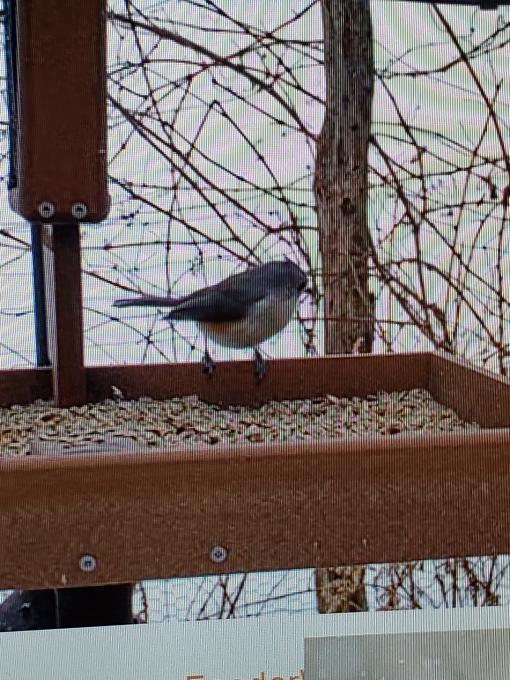 Just spent 15 minutes watching the birdcam at Cornell. I saw a woodpecker, blue jay, cardinal, crow, and this bird in the picture. Can anyone help me identify it?
Just spent 15 minutes watching the birdcam at Cornell. I saw a woodpecker, blue jay, cardinal, crow, and this bird in the picture. Can anyone help me identify it? 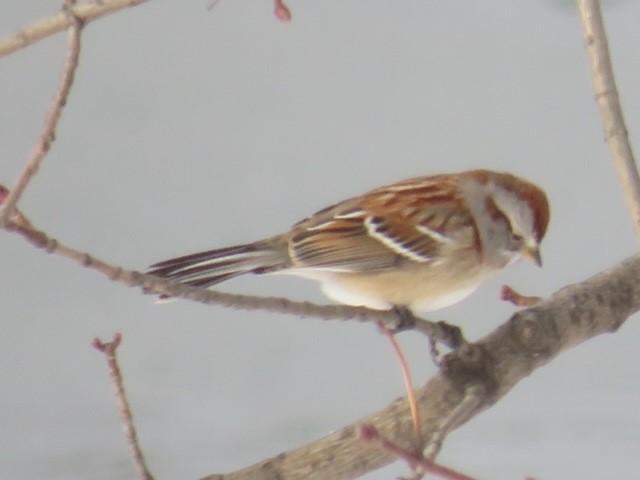
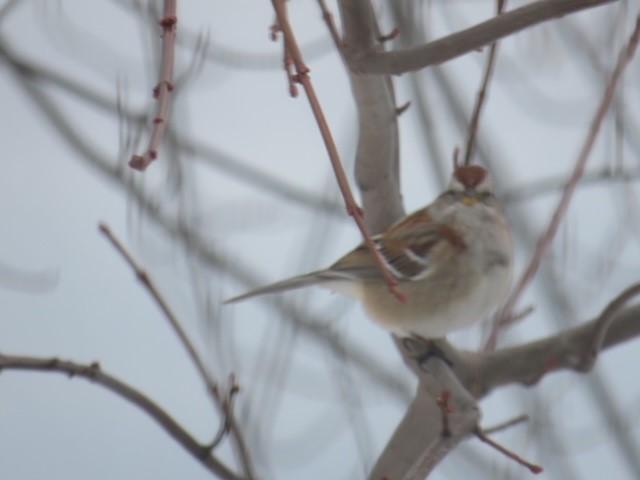
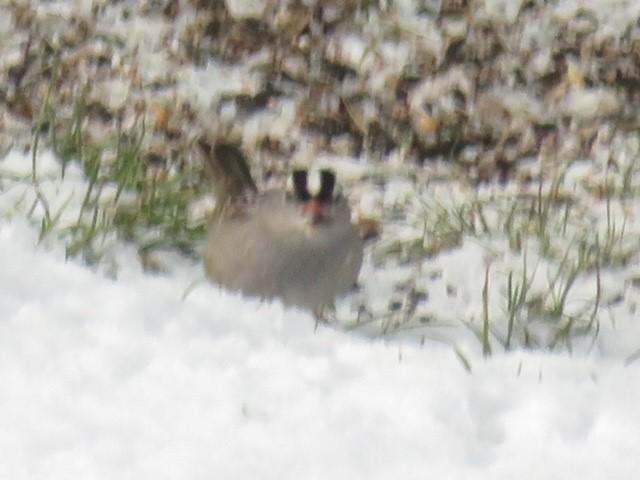
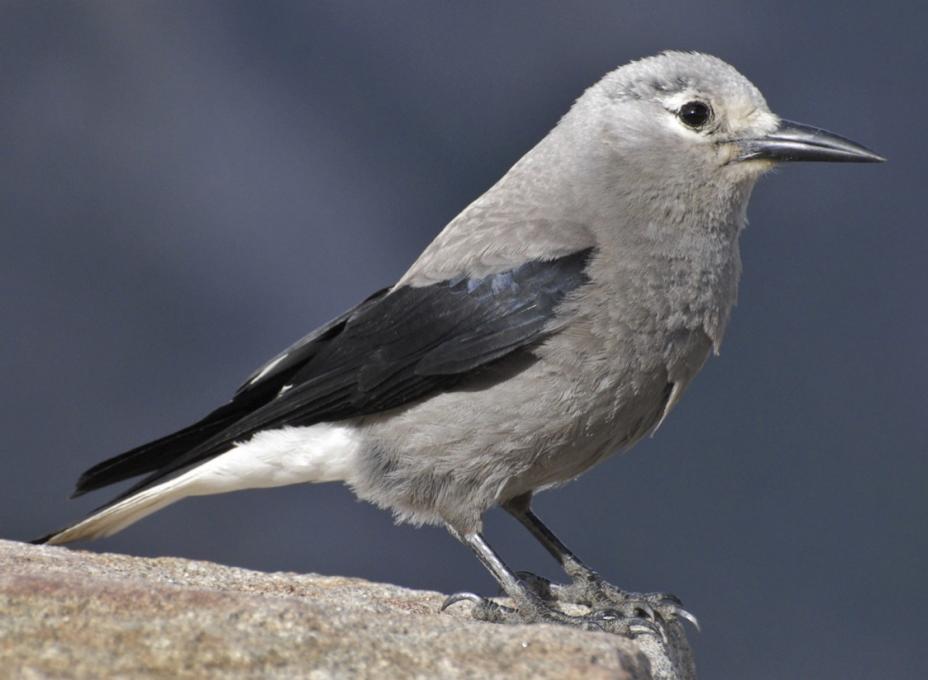


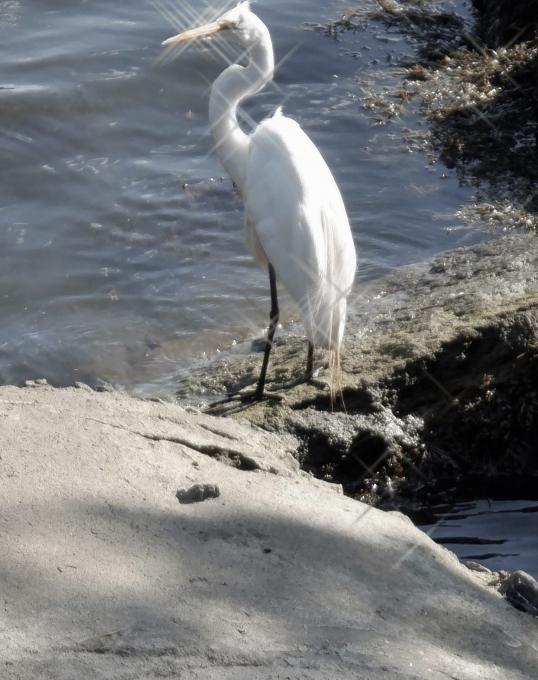 An, of the 'Crane Order,' Bird. On the north-shore of MA. He probably will go South for the Winter. As far as where ? Northern Georgia ? Is a Snowy Egret a 'must migrate' bird ?
An, of the 'Crane Order,' Bird. On the north-shore of MA. He probably will go South for the Winter. As far as where ? Northern Georgia ? Is a Snowy Egret a 'must migrate' bird ?